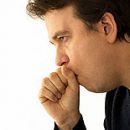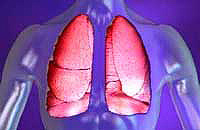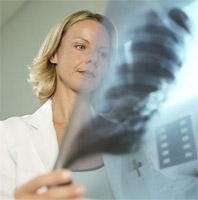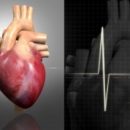What is apnea? What are the methods of treating the stop of breathing in a dream? Read the answers to questions in the article.
Content
Stop breathing in a dream - sleep disorder, characterized by frequent cases of obstruction of the upper respiratory tract. Apnea not only causes drowsiness during the day and can lead to lethargy, but also represents a danger to life in the absence of timely treatment. Find out what is characterized by the obstructive sleep apnea syndrome from central sleep apnea syndrome, what are the methods of treating this disease and how effective the therapeutic mask is.
Stop breathing in a dream
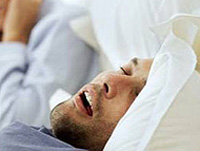 The muscles of the upper respiratory throat passes the air flow to the easy. In a dream, these muscles relax, but the influx of air to the lung does not stop. Some people have a channel for passing an air flow significantly narrows that it makes it difficult to breathe. Night apnea is a disease in which the obstruction of the respiratory tract leads to a violation of the normal inflow of air to the easy, which leads to a snoring and short-term respiratory stop.
The muscles of the upper respiratory throat passes the air flow to the easy. In a dream, these muscles relax, but the influx of air to the lung does not stop. Some people have a channel for passing an air flow significantly narrows that it makes it difficult to breathe. Night apnea is a disease in which the obstruction of the respiratory tract leads to a violation of the normal inflow of air to the easy, which leads to a snoring and short-term respiratory stop.
The attacks of the respiratory stop are replaced by sharp attempts to resume respiration, which are accompanied by loud sighs and sharp snoring. As a result, this disease leads to sleep disorders and violation of body biorhythms. In addition, in this case, the level of oxygen in the blood decreases, which leads to drowsiness and fast fatigue. In severe cases, sleep apnea can lead to pulmonary hypertension. This disease is most susceptible to full elderly men, but sometimes it develops in women.
One of the causes of obstructive sleep apnea syndrome can be a big neck diameter. Sleep apnea is a fatal disease, as it can provoke a heart attack or stroke. Due to frequent attacks apnee, a person feels drowsiness and fatigue, which can lead to injuries in production and DPT.
Diagnostic procedures helping to reveal sleep apnea and determine its severity:
- Electrocardiogram (ECG) showing cardiac arrhythmia in a dream
- Echocardiogram, allowing to explore the work of the heart
- Thyroid analyzes
- Studies sleep
The purpose of the treatment of sleep apnea is to prevent the obstruction of the respiratory tract and, as a result, stop the breath. Patients are recommended to maintain a healthy body weight and refrain from consumption of alcoholic beverages or sleeping bags before bedtime. Positive continuous pressure in aerial paths - form of artificial ventilation of the lungs. This treatment procedure of sleep apnea is that the patient for sleeping is put on a special mask, closing nose and mouth, which prevents the obstruction of the air pathways.
Treatment of sleep apnea
Treatment of night apnea syndrome may be limited to changing the lifestyle, drug intake, but in some cases it is not necessary without surgery. First of all, patients recommend to lose weight and abandon smoking - this is one of the main factors for the development of sleep apnea.
It can improve nasal breathing. The use of positive continuous pressure in the aerial paths helps prevent snoring and attacks of respiratory stop in a dream. The intensity and pressure of the air flow that comes through the mask is determined by the doctor.
What is syndrome
obstructive apnea sleep
Obstructive sleep apnea syndrome - a common sleep disorder caused by the obstruction of the respiratory throat or trachea, in which the air enters the body. Obstruction can create language, almonds or tongue. In some cases, the obstruction of airflows create fatty tissues.
Sacred syndrome patients sleep apnea are often complaining about the following symptoms:
- Loud snoring
- Sleeping day
- Memory losses
- Inability to focus on
- Morning headaches
- Lethargy
What is central sleep apnea syndrome
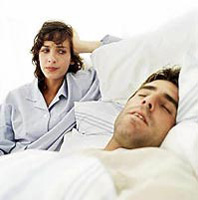 Central sleep apnea syndrome - a disease in which the body will forget to breathe within a few seconds. This sleep apnea syndrome is caused by non-obstruction, it has neurological origin. Central apnea manifests itself short-term attacks of full respiratory stop. This neurological disease may be accompanied by a violation of swallowing mechanisms, weakness and numbness of the limbs. Diagnose the central sleep apnea syndrome magnetic resonance tomography and sleep monitoring throughout the night.
Central sleep apnea syndrome - a disease in which the body will forget to breathe within a few seconds. This sleep apnea syndrome is caused by non-obstruction, it has neurological origin. Central apnea manifests itself short-term attacks of full respiratory stop. This neurological disease may be accompanied by a violation of swallowing mechanisms, weakness and numbness of the limbs. Diagnose the central sleep apnea syndrome magnetic resonance tomography and sleep monitoring throughout the night.
The central sleep apnea syndrome can lead to:
- Abnormal drowsiness day
- Increased irritability
- Inability to focus on
- Sleep mode disorders
- Increase pressure
- Development of heart disease
For the treatment of central sleep apnea syndrome, medicines or oxygen therapy are used. Also used positive continuous pressure in aerial paths.
Surgery
Sleep apnea is often treated with surgical path - remove the cause of the obstruction of the air paths. Often, increased almonds or adenoids are removed to treat sleep apnea. Uhluopalatophanelasty - another common surgical operation, which is performed during sleep apnea. In the process of operation, the patient is removed excess fabric from the back of the throat with the aim of increasing the size of the upper air pathways.
As a rule, the soft sky (sky curtain), located at the bottom of the rear wall of the throat, remove with uvolatoofaringoplasty. This surgical operation is performed under general anesthesia. In some leading clinics, it is also performed using a laser under local anesthesia. The reconstructive surgery of the nose straightens the curved nasal partition and removes the excess fabric, which improves the permeability of the nasal airways. Changing the bone structure of the upper respiratory tract allows to facilitate the passage of air, especially when the patient is sleeping.
Mask
In the mask to ensure a positive continuous pressure in the air, the air pressure is used, push the tongue forward. Elimination of this obstruction opens the breath for air, reduces snoring and prevents sleep apnea. Mask is not a method for treating sleep apnea, but it helps to facilitate the patient's condition, reduces the frequency of attacks of respiratory stop. Individual masks are made to order, they adjacent to the face tightly, repeating the outlines of the nose, cheeks, lips and forehead patients. The mask is tightly fixed on the face so that there are no gaps between the skin and the inner surface of the mask.

